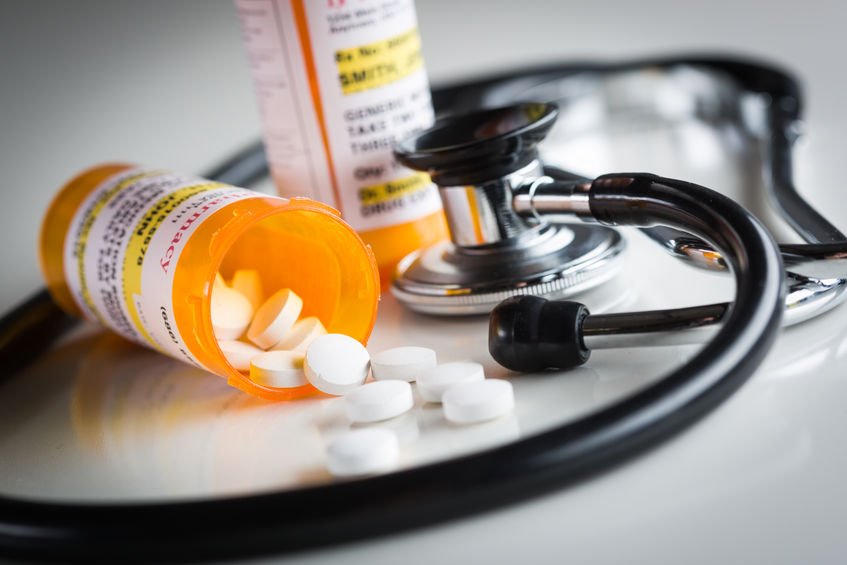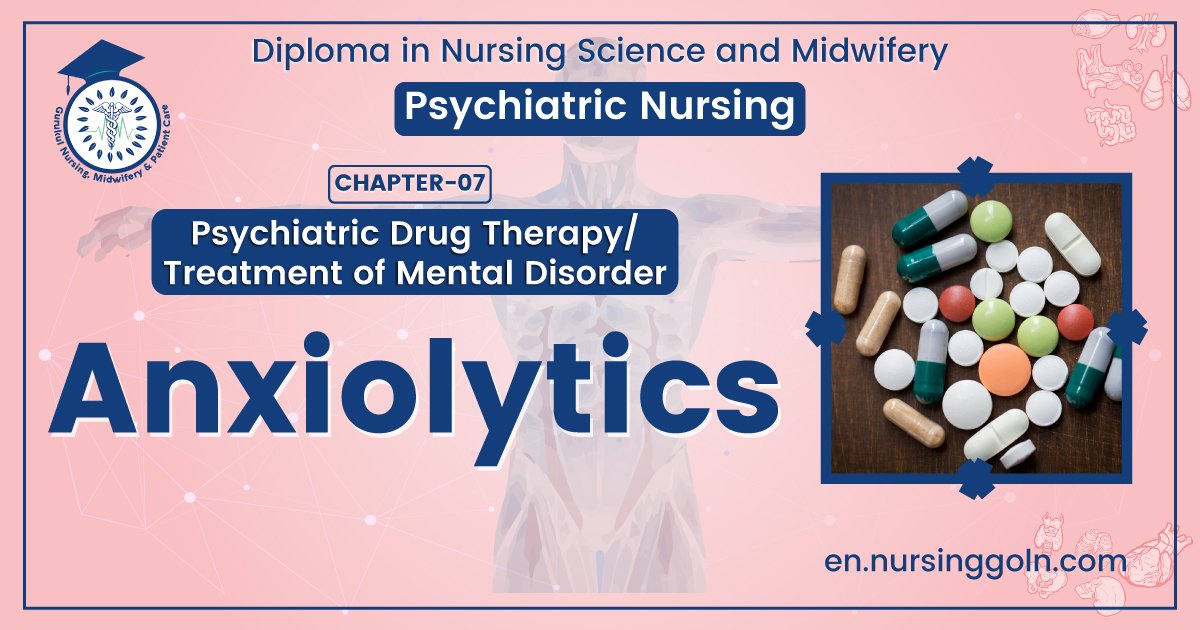Concept of Anxiolytics – This book covers the entire syllabus of “Psychiatric Nursing” prescribed by the Universities of Bangladesh- for Basic and diploma nursing students. We tried to accommodate the latest information and topics. This book is an examination-friendly setup according to the teachers’ lectures and examination questions.
At the end of the book previous university questions are given. We hope in touch with the book students’ knowledge will be upgraded and flourish. The unique way of presentation may make your reading of the book a pleasurable experience.

Concept of Anxiolytics
Anxiolytics:
They are also known as antianxiety drugs or minor tranquilizers.
They are effective in reducing the anxiety in anxiety disorders and also facilitate sleep.
[Ref: S Nambi/24/186]
Classification of anxiolytic drugs:
| Benzodiazepines | Non-benzodiazepines | ||
| Drug | Dose (mg/day) | Drug | Dose (mg/day) |
| 20-100 5-20mg/day 30-120 mg/day 0.5-4 mg/day 5-20mg/day 1-4mg/day 5-50mg/day 5-30 mg at night (only perenteral)
| Buspirone Beta-blockers | 20-30mg/day 10-40 mglday |
[Ref: S Nambi/24/186]
Indications of anxiolytic drugs:
1. Anxiety disorders/panic disorders
2. Insomnia
3. Obsessive compulsive disorders
4. Depression
5. Post-traumatic stress disorders
6. Alcohol withdrawal.
[Ref: KP Neeraja/1″/Vol-1/281]

Mechanism of action of benzodiazepines:
Benzodiazepines
⇓
Binds with specific regulatory site on GABA receptor in Brain
⇓
Enhance GABA activity
⇓
Opening of Cr channels
⇓
Hyperpolarisation of cells
⇓
Depression of CNS
Classification of benzodiazepine:
| Short acting (<5 hours) | Intermediate acting (128-5 hours) | Long acting (t up-to 200 hours) |
|
|
|

Pharmacological/therapeutic action of benzodiazepine:
A. CNS effects:
1. Anxiolytic & tensiolytic effects
2. Sedative & hypnotic effect
3. Anti-convulsant effect
4. Skeletal muscle relaxant effect
5. Anterograde amnesia.
B. Peripheral action; only two actions:
1. Neuromuscular blockade (high dose)
2. Coronary vasodilatation (IV)
Indications of benzodiazepine:
1. Treatment of anxiety.
2. As sedative -Hypnotics.
3. As skeletal muscle relaxant (convulsive disorders)
➤ Tetanus
➤Status epilepticus
➤ Eclampsia
4. Preanesthetic medication.
5. Nightmares, somnambulism (in children).
6. As anticonvulsant (status epilepticus): Diazepam I/V For general anaesthesia (in balanced anaesthesia)
7. For sedation before medical or surgical procedure, e.g:
➤ Endoscopy
➤ Cardioversion
8. Management of alcohol withdrawal syndrome

Side effects of benzodiazepines:
1. Normal therapeutic dose:
➤ Dry mouth
➤ Light headache
➤ Lassitude
➤ Motor incoordination
➤ Ataxia
➤ Drowsiness
➤ Confusion
➤ Impair driving skill
2. Acute overdose: Prolong sleep.
3. Tolerance and dependency.
Therapeutic choices of benzodiazepines:
| Therapeutic action | Therapeutic use | Choice of benzodiazepines |
| Anxiolytic | Anxiety disorders, alcohol withdrawal | Diazepam |
| Hypnotic | Premedication in anesthesia | Temazepam |
| Anticonvulsant | Epilepsy, myoclonus, alcohol withdrawal | Lorazepam |
| Muscle relaxant | Muscle spasticity and akathisia | Diazepam |
[Ref: S Nambi/2/186-187]
Nursing care of a patient taking anxiolytic drugs:
1. Monitor vital signs regularly and advice to change posture slowly
2. Advice patient not to take alcohol
3. Advice patient not to drive or operate heavy machine while on medication
4. Advice patient not to increase the dose of the drug by himself
5. Never withdraw medication without the advice of the doctor concerned,
Read more:
